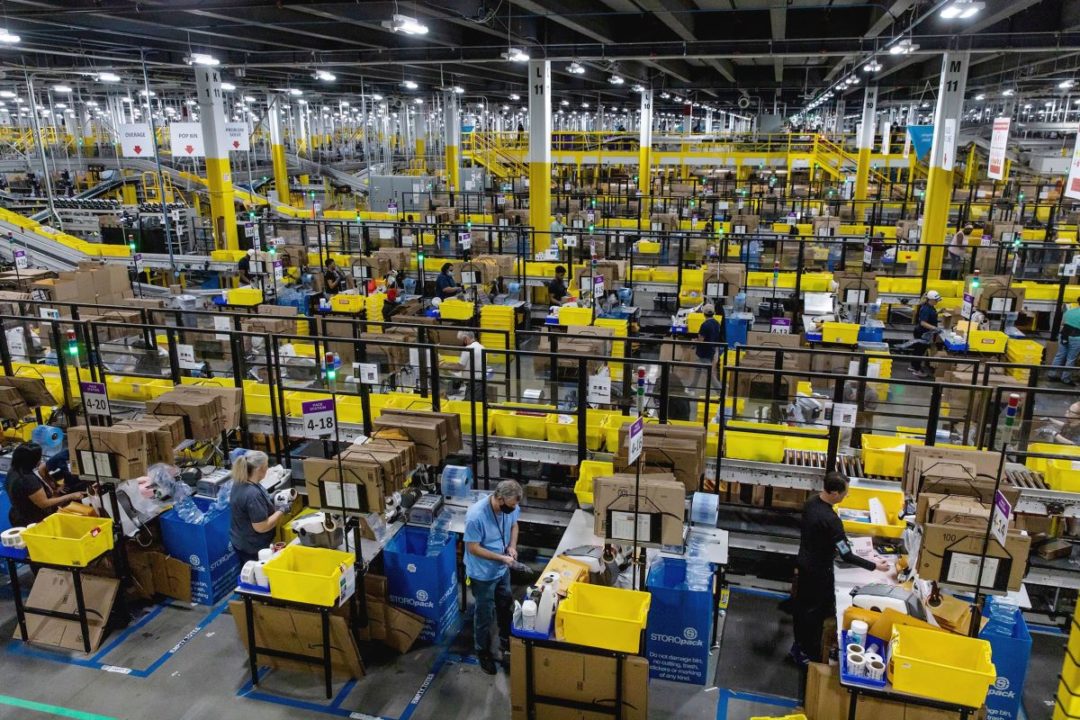
Visit Our Sponsors |
|
|
|
|
|
|
|
|
|
|
|
|
|
|
|
|
|
|
|
|
|
|
|
|
|
|
|
|
|
|
|
|
|
|
|
|
|
|

Amazon.com Inc., determined to reduce the size of its sprawling delivery operation amid slowing sales growth, has abandoned dozens of existing and planned facilities around the U.S., according to a closely watched consulting firm.
MWPVL International Inc., which tracks Amazon’s real-estate footprint, estimates the company has either shuttered or killed plans to open 42 facilities totaling almost 25 million square feet of usable space. The company has delayed opening an additional 21 locations, totaling nearly 28 million square feet, according to MWPVL. The e-commerce giant also has canceled a handful of European projects, mostly in Spain, the firm said.
Just this week Amazon warned officials in Maryland that it plans to close two delivery stations next month in Hanover and Essex, near Baltimore, that employ more than 300 people. The moves are a striking contrast with previous years, when the world’s largest e-commerce company typically entered the fall rushing to open new facilities and hire thousands of workers to prepare for the holiday shopping season. Amazon continues to open facilities where it requires more space to meet customer demand.
“There remains some serious cutting to do before year-end — in North America and the rest of the world,” said Marc Wulfraat, MWPVL’s founder and president. “Having said this, they continue to go live with new facilities this year at an astonishing pace.”
Maria Boschetti, an Amazon spokesperson, said it’s common for the company to explore multiple locations at once and make adjustments “based upon needs across the network.”
“We weigh a variety of factors when deciding where to develop future sites to best serve customers,” she said in an emailed statement. “We have dozens of fulfillment centers, sortation centers and delivery stations under construction and evolving around the world.”
The Maryland closings are part of an initiative to shift work to more modern buildings, Amazon says. “We regularly look at how we can improve the experience for our employees, partners, drivers and customers, and that includes upgrading our facilities,” Boschetti said. “As part of that effort, we’ll be closing our delivery stations in Hanover and Essex and offering all employees the opportunity to transfer to several different delivery stations close by.”
Chief Executive Officer Andy Jassy has pledged to unwind part of a pandemic-era expansion that saddled Amazon with a surfeit of warehouse space and too many employees. The company has typically weaned its ranks of hourly workers by leaving vacant positions open, slowing hiring and tightening disciplinary or productivity standards. But warehouse closings are also part of the mix, and workers are bracing for more. During the second quarter, Amazon’s workforce shrank by roughly 100,000 jobs to 1.52 million, the biggest quarter-to-quarter contraction in the company’s history.
The Seattle company has also been seeking to sub-lease at least 10 million square feet of warehouse space, Bloomberg reported in May.
When homebound shoppers stampeded online during the pandemic, Amazon responded by doubling the size of its logistics network over a two-year period, a rapid buildout that exceeded that of rivals and partners like Walmart Inc., United Parcel Service Inc. and FedEx Corp. For a time, Amazon was opening a new warehouse somewhere in the U.S. roughly every 24 hours. Jassy told Bloomberg in June that the company had decided in early 2021 to build toward the high end of its forecasts for shopper demand, erring on the side of having too much warehouse space rather than too little.
Wulfraat said that most of the closings announced this year are delivery stations, smaller buildings that hand off already packaged items to drivers. Facilities that have been canceled include several planned fulfillment centers, giant warehouses containing millions of items. MWPVL estimates that
Amazon operates more than 1,200 logistics facilities, large and small, around the U.S.
More belt-tightening could complicate Amazon’s already fraught relations with organized labor. Earlier this year, an upstart labor union started by a fired Amazon worker won a historic victory at a company warehouse in Staten Island, New York. A federal labor official on Thursday rejected
Amazon’s bid to overturn the result. In August, workers at an Amazon facility near Albany, New York, filed a petition to hold a union election there.
How much overcapacity Amazon needs to work through is hard to gauge, and some analysts believe the extra space will come in handy during the Christmas holiday season.
RELATED CONTENT
RELATED VIDEOS
Timely, incisive articles delivered directly to your inbox.

